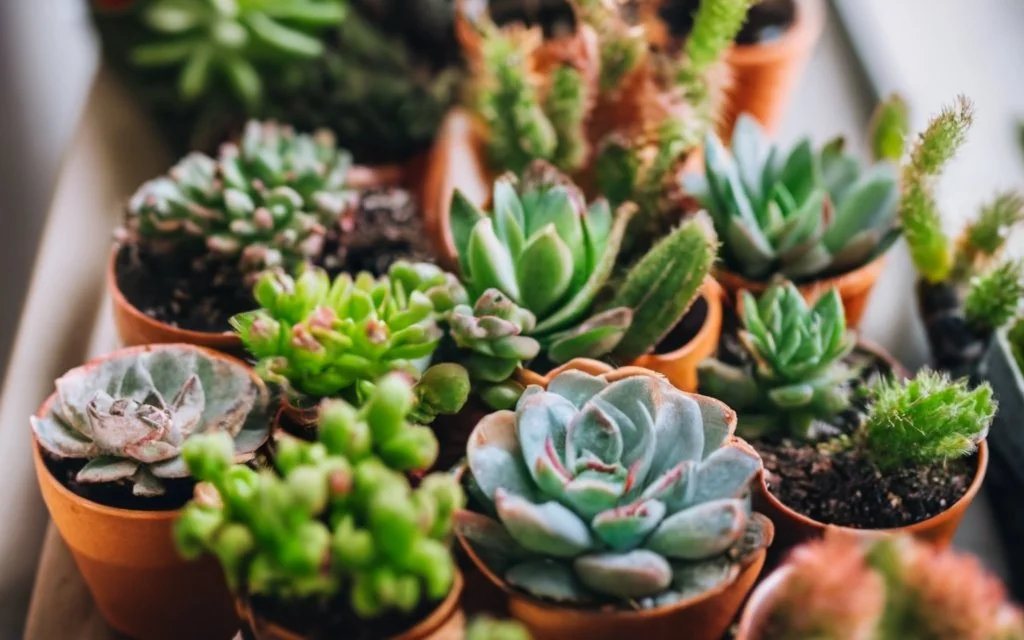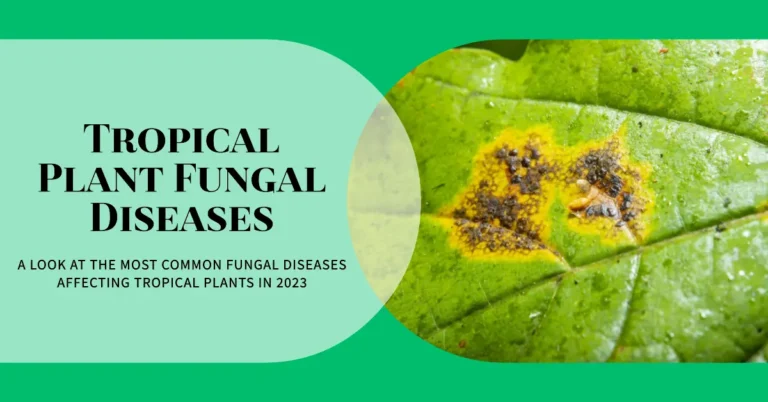Fertilizing Succulents
Fertilizing Succulents: Unveiling the Essentials for Thriving Plants

Succulents have stolen the hearts of plant enthusiasts globally, offering a splash of green and a slice of the outdoors right inside your living space. But nourishing these green wonders involves more than just the sporadic watering session; it requires a deep understanding of their nutritional needs to foster robust growth. Delving into the world of fertilizing succulents unveils a regimen that promotes healthy and vibrant plants. Let’s journey together into the nurturing world of succulents.
Watering Your Succulents: Not Too Much, Just Right
Succulents, synonymous with desert flora, are indeed accustomed to periods of drought. Yet, these hardy beings crave hydration, administered in controlled, infrequent sessions to prevent the dreaded root rot.
Tip: Align your watering routine to mimic the sporadic rainfall of their natural habitats.
Light: Illuminating the Path to Lush Greenery
Imagine the joy of basking in the perfect glow of sunlight – your succulents share this delight. Situating them near windows or outfitting your space with artificial grow lights can be your solution to ensuring they receive that golden touch without enduring a sunburn.
Remember: Moderation is key to preventing sun-scorched leaves.
Fertilizing Succulents: The Balanced Diet They Crave
Tending to your succulent’s nutritional needs is akin to perfecting a gourmet recipe. Incorporating the right balance of nutrients – nitrogen for leaf growth, phosphorus for root development, and potassium for overall health – constitutes the essence of fertilizing succulents.
Important: Tailor your fertilizing routine to suit your specific type of succulent.
The Building Blocks of Nutritional Supplements for Succulents

When embarking on the journey of fertilizing succulents, one needs to be well-versed in the primary nutrients that influence their growth:
- Nitrogen (N): Propels leaf development
- Phosphorus (P): Essential for root and flower growth
- Potassium (K): Contributes to the overall health
- Calcium (Ca)
- Magnesium (Mg)
- Sulfur (S)
Recognizing the necessity for these elements provides a springboard for fostering succulents that are not just survivors but thrive in your indoor garden.
Soil and Nutrients: The Support System of Your Succulents
Understanding that your succulents extract nutrients from their soil is pivotal. Yet, as these resources wane, a gardener’s role morphs into that of a nurturer, replenishing the soil’s nutrient content through fertilizing to sustain vibrant growth.
Guide: Regularly refresh your potting medium to offer a continual supply of essential nutrients.
Striking the Balance in Fertilizing Succulents
The art of fertilizing succulents lies in striking a meticulous balance, avoiding undernourishment and overfeeding. Recognizing the specific nutrient requirements of your indoor plants, such as the preference for low-nitrogen fertilizers, could be your key to fostering a garden bustling with life and resilience.
Note: Discerning the specific needs of your succulent type averts the risks associated with lush yet fragile growth, prone to pests and diseases.
Conclusion
As we forge ahead, we will further unravel the complexities of fertilizing succulents, guiding you in nurturing indoor plants that are a testament to vibrancy and health. Stay tuned for insights on detecting signs of nutritional deficiencies and ways to curtail them, ensuring your succulents are always at the peak of their splendor.
Fertilizing Succulents: When and How Often Should You Feed Them?

The realm of fertilizing succulents is vast and multifaceted, encompassing not only the appropriate nutrients but also the optimal frequency of feeding and the suitable method of application. A comprehensive understanding of their feeding regimen is indispensable to grace your indoor spaces with succulents that are the epitome of health and vibrancy. Let’s delve deeper.
Deciphering the Right Frequency of Feeding Your Succulents
The narrative that surrounds the succulent care regimen often highlights their low-maintenance nature. While true, this doesn’t exempt them from benefiting immensely from a carefully crafted feeding routine.
- Active Growing Season (Spring and Summer): A monthly nourishing session is recommended to foster growth.
- Dormant Period (Fall and Winter): Taper down the feeding frequency to once every two months or less to align with their slowed growth pace.
Note: Adapt the feeding routine according to the succulent variety at hand, respecting their individual growth rhythms.
The Art of Choosing the Ideal Plant Food When Fertilizing Succulents
Stepping into the vast world of plant food options can seem daunting. However, a nuanced understanding of nutrient preferences is central to the philosophy of fertilizing succulents. Your ideal pick should be a slow-release granular or liquid fertilizer boasting a balanced N-P-K ratio.
- Nitrogen (N): Facilitates robust leaf growth through enhanced chlorophyll production.
- Phosphorus (P): A catalyst for potent root development and prolific flowering.
- Potassium (K): Oversees the systematic movement of water and nutrients within the succulent, promoting overall health.
Tip: Reach out to seasoned gardeners or local nurseries for personalized advice on selecting the right plant food.
Methods of Application: Delivering Nutrients Effectively
Now that you have decoded the fundamentals of fertilizing succulents let’s address the methods available to effectively introduce nutrients to your green companions.
- Direct Application
- Procedure: Disperse the plant food evenly around the soil encompassing your succulent, avoiding leaf and stem contact to prevent burns.
- Advantage: Direct contact with the soil ensures nutrient absorption from the root level.
- Liquid Feeding
- Procedure: Integrate the plant food with water per the package’s guidelines, and proceed to water your succulents.
- Advantage: A simultaneous provision of nutrients and hydration, maximizing efficiency while fostering growth.
Guideline: Commence with small-scale trials of different techniques to discern the best fit for your succulents, safeguarding them from potential damage.
Wrapping Up
Embarking on the enriching journey of fertilizing succulents invites you to a world of vibrant and healthy indoor plants. By harnessing the power of the right nutrients, administered through suitable methods at optimal frequencies, you pave the path for succulents that are a living testimony to nature’s splendor in your living space. Remember, nurturing succulents is a continual learning journey, where patience and attunement to their needs lead to green glory. Stay tuned for more insights as we explore this beautiful green journey further!
Potential Risks of Overfeeding Your Succulents

Unfortunately, a well-intended feeding regimen for your succulents can transgress into dangerous territory, one replete with a series of complications stemming from overfeeding. Your delicate succulents could be besieged by issues ranging from nutrient burn to disrupted soil pH levels. Let’s walk through some of these risks to avert potential pitfalls.
Hazards to Keep in Mind
- Nutrient Burn
- Manifestation: Brown spots or patches on leaves and stems, a precursor to wilting and drooping.
- Extreme Scenario: The plant adopts a yellowish-brown hue and ultimately succumbs to death.
- Proactive Step: Avoid the “more is better” approach, adhering to a moderated feeding schedule.
- Root Damage
- Cause: Exposure to exceedingly high quantities of fertilizers.
- Aftermath: Impaired water absorption capability and a heightened susceptibility to diseases and pests.
- Guidance: Embrace a feeding pattern that upholds the delicate balance of nutrient provision.
- Disrupted Soil pH
- Trigger: Excessive fertilization causes a pH imbalance in the soil.
- Consequence: A fertile ground for unwarranted microbial activity ushering in the dreaded root rot.
- Advice: Strive for a slightly acidic soil environment conducive to succulent growth.
How to Spot Nutrient Deficiencies in Succulents
Recognizing nutrient deficiencies in succulents is an acquired skill, essentially rooted in a deep understanding of your plant’s typical healthy appearance. Keep a vigilant eye on your succulent, and observe any deviations from its healthy demeanor, as these could be indicators of nutrient deficiencies.
Signs of Nutrient Deficiencies
- Yellowing Leaves
- Potential Cause: Nitrogen deficiency impairing the photosynthesis process.
- Solution: Enhance the nitrogen content in your feeding regimen.
- Purplish or Reddish Leaves
- Potential Cause: Phosphorus deficiency hampering root development and flowering.
- Solution: Incorporate a fertilizer rich in phosphorus to foster flowering.
- Distorted Growth and Brown Spots
- Potential Cause: Calcium deficiency affecting cell wall structure.
- Solution: Opt for a calcium-rich fertilizer to rectify the distorted growth patterns.
Remember: While these signs can guide you, always contemplate a spectrum of factors before finalizing the diagnosis, as other issues could mimic these symptoms.
Common Mistakes to Avoid When Feeding Succulents
Navigating the path of feeding succulents does entail the possibility of stumbling upon mistakes. The spirit of nurturing these plants to their fullest potential beckons a reflection on common errors to sidestep.
Pitfalls and How to Avoid Them
- Overwatering
- Misconception: Due to their desert origin, succulents need abundant water to thrive indoors.
- Reality: A dry environment with water provision only post the soil dries out completely suits them best.
- Overfeeding
- Misconception: Frequent nourishment promises better growth.
- Reality: A bi-annual feeding routine aligning with their growth season suffices, respecting their adaptation to sparse nutrient environments.
- Inappropriate Fertilizer Usage
- Misconception: Any fertilizer caters well to succulents.
- Reality: A discerned choice of balanced formulas or those tailored for cacti and succulents preserves the natural growth rhythm.
Tip: Engage with a community of succulent enthusiasts or seek expert advice to foster a nurturing environment for your green friends.
Conclusion
Tending to your succulents with a balanced nourishment regimen stands central to witnessing lush growth. By steering clear of overfeeding and being adept at spotting nutrient deficiencies early on, you invite a vibrant and healthy life for your succulents. Remember, the beauty lies in the journey of learning and growing together with your plant. Stay informed and happy gardening!
Natural Alternatives to Store-Bought Succulent Fertilizers
Opting for natural alternatives to fertilize your succulents can be a step towards eco-friendly gardening and a means to save some dollars. Moreover, embracing the DIY spirit ensures transparency — you are in control of the contents being used without the worry of hidden chemicals.
Homemade Fertilizers to Try
- Compost Tea
- Preparation: Steep compost in water for a few days.
- Benefits: Form a nutrient-rich liquid that can be diluted and used to feed your succulents.
- Usage: Can be mixed directly with soil or used as a liquid fertilizer.
- Coffee Grounds
- Preparation: Rinse to remove acidity and then mix with potting soil or use as mulch.
- Benefits: Rich in nitrogen, facilitating healthy and robust growth of succulents.
- Usage: This can be sprinkled on top of the soil or incorporated into the soil mix.
- Eggshells
- Preparation: Crushed and sprinkled on the soil or mixed into the soil.
- Benefits: High calcium content promotes strong cell walls.
- Usage: An excellent addition to your potting mix to foster healthy growth.
Note: While these natural alternatives offer significant macronutrients such as nitrogen, phosphorus, and potassium, they might fall short in providing essential micronutrients. Therefore, consider them complementary to specialized succulent foods, especially if you harbor rare species or those exhibiting signs of deficiencies.
Maintaining Healthy Succulents: Key Takeaways and Best Practices
Nurturing healthy succulents isn’t a herculean task. Aligning care routines with their intrinsic needs often paves the path to vibrant growth. Here we delineate some cardinal rules and best practices to let your green companions flourish.
Tips for Healthy Succulent Care
- Watering
- Frequency: Sparingly, avoiding waterlogged soil to prevent root rot.
- Tip: Allow the soil to dry out completely between waterings.
- Soil Type
- Preference: Well-draining soil to prevent water retention.
- Tip: Opt for soil varieties that do not retain moisture for long periods.
- Pot Selection
- Best Choice: Terra cotta pots are known for their porous nature.
- Benefit: Facilitates faster drying of the soil, averting excess moisture accumulation.
- Sunlight
- Requirement: Bright but indirect light for a minimum of six hours daily.
- Tip: Identify a spot that receives ample sunlight but not direct harsh rays.
- Feeding
- Frequency: Regular but moderate feeding during growing months (spring and summer).
- Advice: Choose fertilizers specifically formulated for succulents to avoid nutrient burn.
Conclusion
Cultivating a succulent garden rich in vitality hinges on a spectrum of factors, from the right feeding regimen to ensuring optimal light conditions. As you adhere to these guidelines, the journey with your succulent companions promises to be filled with lush greenery and blossoming flowers, echoing the essence of a vibrant and lively ecosystem nurtured with love and care. Take a step today towards informed gardening, and watch your succulents thrive in health and beauty. Happy gardening!
FAQs
What are the nutritional needs of succulents?
Just like other plants, succulents require a range of nutrients to grow and thrive. They need a good balance of macronutrients like nitrogen, phosphorus, and potassium and micronutrients like iron, manganese, and zinc.
How often should I feed my succulents?
The frequency of feeding your succulents can depend on a variety of factors, including their type, their growth stage, and the season. However, as a general rule, you should aim to feed them once every month during their active growing season.
What type of plant food is best for my succulents?
Succulents do well with low-nitrogen plant food specifically made for cacti and succulents. These formulas usually have a higher ratio of phosphorus and potassium, promoting flowering and strengthening the roots.
What’s the best way to apply plant food to my succulents?
You can apply plant food to your succulents using a variety of methods, including through a watering can or with a spray bottle. Be sure to follow the instructions on the plant food package to ensure you’re applying the correct amount.
Are there any risks associated with overfeeding succulents?
Overfeeding succulents can lead to issues like leaf burn and root damage, making your plants more susceptible to pests and diseases. Always make sure to follow feeding guidelines to avoid these problems.
How can I tell if my succulent is deficient in nutrients?
Nutrient deficiencies in succulents can lead to a range of symptoms, including yellowing leaves, slow growth, and a lack of flowering. If you notice these signs, it might be time to reassess your feeding schedule and the type of plant food you’re using.
Are there any common mistakes to avoid when feeding succulents?
Some common mistakes to avoid include overfeeding, not adjusting your feeding schedule according to the seasons, and using a plant food that isn’t suitable for succulents.
Are there any natural alternatives to store-bought succulent fertilizers?
Natural alternatives include compost, worm castings, and bone meal. These provide a good range of nutrients for succulents and can be a more sustainable option.
What are some best practices for maintaining healthy succulents?
Best practices for maintaining healthy succulents include providing them with the right amount of light, watering them properly, feeding them with the right plant food, and repotting them when necessary.







